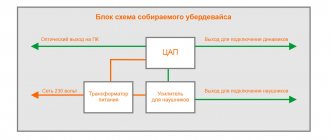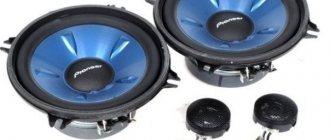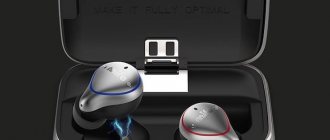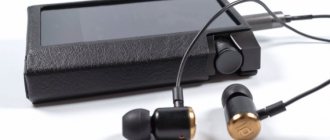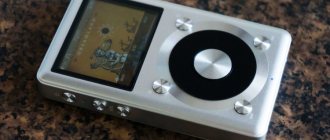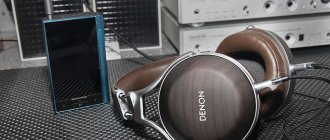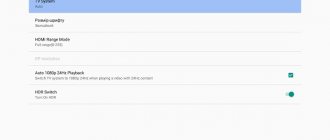Review of DACs from China (Sabre32 ES9018, CS4398, AD1955)
I came across three DACs of different price categories from China. The method of their selection was determined more by imperial means than by anything else.
The first DAC that will be discussed is built on the CS4398 chip.
I purchased it as a soldered board for about $40 and a separate R-Core transformer for $30. Those. the purchase cost me $70 in the “without case” version. The AC rectifier is already on the board, so all that was left was to connect the wires from the transformer.
Given the price of $70, what am I going to compare it to?
The closest competitors are certainly sound cards for computers and inexpensive CD players built on a similar DAC CS4398.
A little about the capabilities of the purchased Chinese DAC.
DAC CS4398 (CS4398 DAC)
The board contains the CS8416 receiver and the CS4398 DAC itself.
Frequency support: from 32000 to 192000 Hz/24 bit.
Via USB, the frequency is limited only to 44.1 and 48K Hz.
But the DAC can operate via the SPDIF input thanks to the low-jitter CS8416 receiver with frequencies of 32K-192K.
The CS4398 DAC itself is interesting in that it is a full-fledged 192K/24-bit stereo DAC, has a dampening detection system, has several built-in digital filters, and is itself a multi-bit delta-sigma.
This DAC is used not only in inexpensive products, such as the ASUS Xonar D1 sound card, but also in almost the entire line of mid-to-high-end Marantz CD players. The CS4398 is installed in the Marantz CD 6004 and even the Marantz CD Pearl KI players.
Of course, no know-how is provided for the board itself; the capabilities inherent in the DAC itself are simply used.
I assembled and auditioned this DAC.
Listening showed that the DAC has a relatively detailed sound. In direct comparison with the sound card, this DAC performed better than the ASUS Xonar D1 sound card, producing better channel separation and detail.
Compared to the [email protected] , this DAC played a little less naturally.
I compared the Marantz CD 6002 ($800) CD player with the same DAC to the CS4398 DAC. The player showed a significantly higher sound class, which could no longer be compared with this scarf.
But when compared with the Marantz CD 5004 CD player (~ $500) on the CS4392 DAC, the sound unexpectedly turned out to be of a similar class.
My conclusion is that this DAC's sound class is comparable to a good sound card for a computer. Has entry-level sound.
The next Chinese DAC reviewed, SMSL AD1955+, is based on the AD1955 chip.
SMSL AD1955+ (AD1955 DAC)
DAC in a beautiful aluminum case. Power supply is similar to a telephone charger.
The AD1955 is a multi-bit delta-sigma DAC supporting data resolutions of 16, 18, 20, 24 bits.
PCM sample rate from 32K to 192K 24 bit.
It promises excellent linearity and low jitter sensitivity.
8x oversampling, DSD support, etc.
In other words, the specifications are quite good.
Unfortunately, the implementation I heard in the form of SMSL AD1955+ made me despondent.
I heard very budget sound at the level of the sound system built into the motherboard. Poor channel separation and very low detail are the main features of this product.
Gustard X10 (Sabre32 ES9018)
To conclude the review, I will talk about listening to the Gustard X10 DAC built on the ESS Sabre32 ES9018 DAC, which is actively used in the upper Hi-Fi and Hi-End segments, for example, in the Wadia 121 DAC.
The Gustard X10 cost me $550.
Sabre32 ES9018 is a modern DAC with very advanced characteristics. It is billed as a reference 32-bit audio DAC with the highest performance.
It is also an 8-channel DAC and, accordingly, can be implemented in systems based on Blue-ray drives.
Signal/noise 135 dB!
Jetter destroyer.
1 million 536 thousand hertz, but only in bypass mode.
Considering that this is a reference duck, I accordingly planned to get the appropriate sound. The implementation itself. at least on paper, the high-precision clock, 500 Hz XMOS, two transformers, etc. are impressive.
So I started listening to this heavy black box.
Unfortunately, a certain number of problems arose during the listening process.
I was able to get the DSD stream that was interesting to me only through PoD (on-the-fly conversion to PCM, when a 2.8 MHz one-bit stream is encoded for transportation within a PCM stream pushed in packets of a certain size).
The sound of DSD itself (either from a computer via optical or USB passed through PCM), and in the version when I connected the Gustard X10 to the SACD/DVD-Audio player Denon DCD-3910, unfortunately was not pleasing. When listening to the Pink Floyd SACD “Dark Side of the Monn,” I heard a cold, sterile sound with some sense of volume. This was definitely not high class.
Further, when connecting an CD player to this DAC, I could not get oversampling - pressing the buttons did not lead to changes - the value 44.1 K was lit on the front screen.
The CD-quality sound itself was very entry-level, with sibilance, fatigue and rather rough.
My opinion boiled down to the fact that $550 is too high a price for this device, since the DAC showed budget sound, which was slightly better in the DSD version.
Unfortunately, this device did not give me the sound that I expected to get from it. CONCLUSION
In conclusion, I will say that after listening to three Chinese-made DACs of different price categories - CS4398, SMSL AD955+, Gustard X10, using different DAC chips, I unfortunately did not find any reasons that would make me say that this sound is good and it's worth listening to.
In this review, the most attractive was the CS4398 DAC, which showed slightly better sound than the Asus Xonar D1 sound card.
But Chinese manufacturers offer a large number of different DAC implementations, and perhaps I accidentally passed by real diamonds, having my eye on the bright tinsel of technical characteristics.
Does theater begin with a hanger?
The theater may begin with a hanger, but the converter certainly begins with switching. How are you and her in general? If there is no better CD transport available as a source, then the choice is predetermined. Any DAC has both optical and coaxial inputs by default, so you just have to decide where your soundtrack will sound best. As a rule, everyone chooses coaxial, but sometimes complete galvanic isolation of optical communication is more useful. But what if you're targeting high-res?
Both TosLink and S/PDIF, even via a balanced XLR connector, are still unable to transmit PCM audio signals above 24 bit/192 kHz. There is also the I2S protocol, but so far it is quite rare. Therefore, if you are interested in even higher matters, including the DSD format, then you should rely on the USB interface. They learned to push 32 bit/768 kHz and DSD512 through it. And here we get an interesting anecdote, as in that story about a watch store, where it is not clear what time it is and only those that are broken twice a day show the correct time. Unlike the more or less predictable old options, the breadth and quality of the USB input implementation turn out to be somewhat guessing.
This is roughly what a complete set of digital inputs for a serious DAC looks like. Here is a schematic representation of the Mytek Manhattan model, which, in addition to the standard set, has connectors for an external synchronization signal and Firewire
More than ten years have passed since the first converters equipped with USB inputs, and yet some manufacturers, as if nothing had happened, install a chip based on the old Burr-Brown 2704, which cannot operate above 16 bits / 48 kHz!
But in general, responsible developers usually try to use USB receivers from the XMOS company, which, by the way, is also barely ten years old. The strength of XMOS microcontrollers, no matter how obscene it may sound, is precisely in the cores, of which there are so many that a lot of things can be configured for a specific task - the number of channels, asynchronous transmission, and top-flight audio. If you are not sure about the reliable USB input of your DAC, purchase USB-S/PDIF converters, which, as a rule, are already tailored strictly for this task.
xCORE-AUDIO Hi-Res 2 - platform with full support for 32-bit/384 kHz audio and DSD 5.6 MHz
So, we list the main manufacturers of digital-to-analog chips that are used in modern converters. Many experienced listeners claim that it is these “hearts” that set the tempo and timbre of your DAC.
Texas Instruments/Burr-Brown
A market long-liver who has taken another long-liver under his wing. If you try to summarize the overall impression based on reviews of Burr-Brown chips, you will get a strong, but not “average” one. Let's just say that BB DACs are a kind of starting point, relative to which competitors sound either “warmer” or “cooler”.
PCM1792A
Price from a batch of 1000 pieces: $7.21. Dynamic range 127 dB, distortion factor 0.0004%.
It can be found in both budget (Asus Xonar, Pro-Ject) and high-end solutions (Aesthetics, Antelope, Bel Canto, Cary Audio). Once again they are fooling honest people - you say? Not certainly in that way. In the second case, the internal digital filter PCM1792A is disabled and it itself works in tandem with an external DSP processor. Its presence, by the way, determines the type of source.
The specification supports DSD stream, and the DSD1792 version can convert it to an analog signal directly, bypassing PCM.
https://www.ti.com/product/pcm1792a
CD player Atoll CD200SE2, inside there is a PCM1792A chip
PCM1793
Price from a batch of 1000 pieces: $2.29. Dynamic range 113 dB, distortion rate 0.001%.
Not very common among audio components (Burson, Simadio Moon), but it is loved by non-names and DIYers for its low price and ease of setup. There is also a DSD1793 version.
https://www.ti.com/product/pcm1793
Burr Brown PCM1793 DAC DAC board based on the chip of the same name
PCM1794a
Price from a batch of 1000 pieces: $7.08. Dynamic range 127 dB, distortion factor 0.0004%.
Another moderately popular chip, perhaps due to the price, although its characteristics are good. The range also includes the DSD1794 version.
https://www.ti.com/product/pcm1794a
PCM1795
Price from a batch of 1000 pieces: $2.9. Dynamic range 123 dB, distortion factor 0.0005%.
Perhaps the whole point is in this chip, since it is slightly inferior in characteristics to PCM1794a, it is cheaper and has a beautiful 32-bit resolution. PCM1795 is loved by T+A, M2TECH, TEAC, Onkyo, Denon and many other hi-fi companies.
https://www.ti.com/product/PCM1795
In the T+A PDP 3000 HV SACD player, the PCM1795 chip is responsible for converting digital to analogue
PCM1796
Price from a batch of 1000 pieces: $2.78. Dynamic range 123 dB, distortion factor 0.0005%.
The chip is similar to the 1795 down to the pinout, but with a dimension of 24 bits. You can find it anywhere – both at Accuphase and at Pro-Ject.
https://www.ti.com/product/pcm1796
Small budget CD player Pro-Ject CD Box DS, powered by PCM1796 chip
PCM1798
Price from a batch of 1000 pieces: $3.31. Dynamic range 123 dB, distortion factor 0.0005%.
This chip is loved by DIYers and is not ignored by reputable manufacturers - PS Audio, Roksan, Simaudio Moon. If anything, PCM1798 also supports DSD stream.
https://www.ti.com/product/PCM1798
PCM5102A, PCM5122
Price from a batch of 1000 pieces: $2.1/2.95. Dynamic range 112 dB, distortion factor – 93 dB.
This series stands apart and also has a beautiful 32-bit number and 384 kHz resolution. These are already independent devices with the possibility of autonomous power supply in an asynchronous USB circuit, not too demanding for additional wiring. Portable DACs like Meridian Explorer or Arcam rPAC - this is it.
https://www.ti.com/product/PCM5102A/description
Arcam rPAC portable DAC with asynchronous USB input and PCM5102 chip

